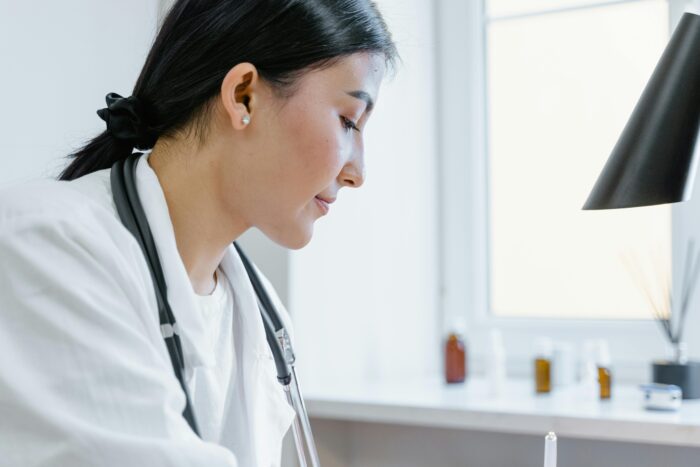There are over 60 dental schools in the U.S.—yet only a handful consistently produce clinicians, innovators, and leaders who define the future of dentistry. And no, simply picking the one with the highest ranking won’t guarantee you’re one of them.
The school you choose shapes far more than your next four years. It determines the sophistication of your clinical training, the doors that open through your professional network, and yes, your long-term earning potential. A mentor who sees your potential. A classmate who co-founds a practice with you. An alumni network that fast-tracks your access to elite residencies—these aren’t nice-to-haves. They’re career accelerators, and they’re often tied directly to the institution you choose.
So, don’t ask which dental school is “best.” Ask which school is best for you. That means interrogating the details—curriculum structure, faculty mentorship, externship opportunities, licensure pass rates. The goal isn’t prestige. It’s trajectory. Choose right, and you won’t just graduate with a DDS or DMD. You’ll walk away with momentum.
Understanding What Makes a Dental School “Top Tier”
A top-tier dental school isn’t defined by glossy marketing or where it lands in someone’s annual list. It’s defined by what it delivers—day in, day out—for its students and graduates.
Start with the curriculum. The best programs integrate foundational science with progressive clinical exposure—often beginning chairside experiences as early as year one. This isn’t just about getting comfortable with patients; it’s about building clinical confidence on a solid academic base. Faculty matter, too. Look for schools where instructors aren’t just publishing papers—they’re mentoring students, leading groundbreaking procedures, and staying active in clinical practice.
Clinical training is your proving ground. How many hours? How many patients? Are you gaining experience across specialties? A school’s partnerships with community clinics, hospitals, and outreach programs can give you a far more dynamic education than a single on-campus facility.
Research isn’t just for those eyeing academia. Top schools support student research that leads to real innovations in biomaterials, oral health policy, and digital dentistry. Whether you want to publish or simply sharpen your analytical skills, strong research support is a must.
Postgrad outcomes are the receipts. Look at match rates for competitive residencies, average debt loads, board pass rates, and early career trajectories. These metrics speak volumes.
Don’t overlook accreditation. Only schools accredited by the Commission on Dental Accreditation (CODA) can guarantee you’re eligible for licensure. That’s not negotiable.
And then there’s fit. Urban vs. suburban. Large vs. intimate cohorts. Collaborative vs. competitive vibe. The “right” environment sharpens your focus and supports your growth. Prestige matters—but not at the cost of well-being or performance. Find the school that aligns with your needs and your ambition.
The Top 10 Dental Schools in the U.S.—And Why They Stand Out
So, which schools actually walk the walk? Below, we profile ten standout dental programs—not just for their reputations, but for how they shape students into exceptional clinicians, researchers, and leaders. Each offers something distinct, whether it’s clinical intensity, research depth, or interdisciplinary access. Your ideal match may not be the “top” school on paper—it’ll be the one that aligns with your goals, values, and ambitions. Let’s break them down.
1. University of California, San Francisco (UCSF)
- Acceptance Rate: ~4%
- Minimum GPA: 3.6
- Minimum DAT: 22
- Cost of Attendance: ~$100K/year
UCSF’s School of Dentistry attracts students who are passionate about public health, social equity, and scientific inquiry. Its mission-driven culture is embedded in every clinical rotation and outreach initiative, especially those serving underserved communities in the Bay Area. Research is not a side option—it’s a core expectation, with robust NIH funding and student-led projects that advance the science of oral health. Students here are often looking to blend clinical excellence with systemic impact. If you want to graduate as a leader in both lab and clinic, UCSF sets the bar.
2. Harvard School of Dental Medicine (HSDM)
- Acceptance Rate: 3%
- Minimum GPA: 3.6
- Minimum DAT: 20
- Cost of Attendance: ~$100K/year
At Harvard, dental students train alongside medical students during their preclinical years, fostering a deeply integrated understanding of systemic health. The program draws intellectually curious, academically elite students who are often eyeing roles in academia, research, or healthcare policy. HSDM’s global health initiatives and dual-degree options attract those who think beyond the drill. It’s not the place to hide in the back of the lab—expect to lead discussions, propose ideas, and shape the future of dentistry. HSDM is where you go to think big and work smart.
3. University of Michigan School of Dentistry
- Acceptance Rate: ~6.5%
- Minimum GPA: 3.8
- Minimum DAT: 22
- Cost of Attendance: ~$95K/year (in-state is lower)
Michigan trains dentists who are ready to run both a clinic and a research lab—and maybe even a startup. Its students are entrepreneurial, tech-forward, and eager to push dentistry into the digital age. Known for its rich clinical volume and interdisciplinary ties to the business and engineering schools, Michigan is ideal for innovators. The school invests heavily in simulation technology and leadership development. Students here aren’t just preparing to treat patients—they’re preparing to lead teams and design the tools of tomorrow.
4. University of North Carolina at Chapel Hill (UNC)
- Acceptance Rate: ~5%
- Minimum GPA: 3.6
- Minimum DAT: 21
- Cost of Attendance: ~$50K/year in-state
UNC’s dental students are known for their service orientation and sense of community. The school prioritizes outreach, with strong partnerships across North Carolina that immerse students in real-world care early and often. UNC fosters a collaborative, down-to-earth culture where students build each other up instead of competing for spots. The program is ideal for those who want to become community leaders and primary care providers while staying close to cutting-edge research. Expect a rigorous education grounded in service and accessibility.
5. Columbia University College of Dental Medicine
- Acceptance Rate: ~5%
- Minimum GPA: 3.7
- Minimum DAT: 23
- Cost of Attendance: ~$140K/year
Columbia appeals to intellectually ambitious students who want to bridge clinical practice with public health, policy, or dual-degree studies. Its location in New York City and its affiliation with a world-class medical center create opportunities for interdisciplinary learning and urban healthcare immersion. Students here are globally minded, with interests that often extend to health equity and systemic change. The curriculum encourages critical thinking, and the school supports a wide array of student initiatives, from research collectives to startup incubators. Columbia isn’t just training dentists—it’s producing healthcare changemakers.
6. University of Pennsylvania School of Dental Medicine
- Acceptance Rate: ~7%
- Minimum GPA: ~3.2
- Minimum DAT Score: 22
- Cost of Attendance: ~$147K/year
Penn Dental draws students who want a balanced blend of clinical intensity, research opportunity, and interdisciplinary flexibility. Whether you’re aiming for private practice or a PhD, Penn creates space for both—and supports dual-degree pathways to match. Its small class sizes foster tight-knit collaboration, while its urban location offers broad patient diversity. Students are encouraged to customize their path, often working with faculty across Penn’s other renowned schools. The vibe here? Sharp, driven, and full of initiative.
7. University of Washington School of Dentistry
- Acceptance Rate: ~6%
- Minimum GPA: 3.2
- Minimum DAT: 19-20
- Cost of Attendance: ~$100K/year
UW’s dental students are mission-driven and drawn to primary care, rural health, and public service. The school’s robust community-based rotations prepare students to meet the dental needs of underserved populations with skill and empathy. Its connections across the Pacific Northwest open unique externship and research opportunities. UW fosters a practical, patient-first approach, with an emphasis on comprehensive care and communication. It’s a place where students build strong relationships—with patients, faculty, and each other.
8. University of Texas Health San Antonio School of Dentistry
- Acceptance Rate: ~6%
- Minimum GPA: 3.5
- Minimum DAT: 20
- Cost of Attendance: ~$88K/year
This school appeals to students who value strong clinical preparation and a straightforward, hands-on learning environment. The program is especially known for its emphasis on procedural volume and chairside experience. San Antonio’s diverse population gives students early exposure to a wide range of cases, often under the guidance of highly experienced faculty. Students are grounded, hardworking, and focused on mastering the craft. It’s a pragmatic program that prioritizes competence over prestige—and that’s exactly why it works.
9. Tufts University School of Dental Medicine
- Acceptance Rate: ~5%
- Minimum GPA: 3.2
- Minimum DAT: 19
- Cost of Attendance: ~$155K/year
Tufts attracts students who appreciate structure, mentorship, and real-world readiness. Its downtown Boston setting gives students access to a broad and diverse patient base, with complex clinical cases coming through the doors daily. The school prides itself on a personalized approach, supporting a variety of student interests—from special care dentistry to public health. Tufts students are known for being resilient, adaptable, and service-oriented. It’s a nurturing yet demanding environment that prepares students to thrive in any practice setting.
10. University of California, Los Angeles (UCLA) School of Dentistry
- Acceptance Rate: ~6%
- Minimum GPA: 3.5
- Minimum DAT: 21
- Cost of Attendance: ~$122K/year
UCLA’s dental school is home to high-achievers who thrive on balance: serious academic rigor paired with West Coast energy. Students here pursue innovation in biomaterials, digital workflows, and clinical research while maintaining strong community ties through outreach programs. The school’s connections to Silicon Beach and biotech startups add an entrepreneurial edge. Faculty are supportive but expect students to take ownership of their education. If you want a top-tier education in a dynamic, research-rich environment, UCLA delivers.
Each of these programs attracts a different kind of candidate—and that’s the point. The best dental school for you will amplify your strengths, challenge your blind spots, and connect you to the people and opportunities that matter most. Prestige alone doesn’t drill a crown or publish a paper. Fit does. Choose strategically.
Comparing Public vs. Private Dental Schools
The public vs. private dental school debate isn’t just about prestige—it’s about value, access, and long-term ROI. Public dental schools typically offer lower tuition for in-state residents, often slashing costs by tens of thousands of dollars over four years. For students staying in-state, this financial edge can be a game-changer—less debt means more freedom post-graduation, whether you’re opening a practice or pursuing a residency.
But if you’re applying from out-of-state, public schools may not be the bargain they seem. Many state schools reserve the majority of seats for residents, and non-resident tuition can rival or exceed private tuition. That said, some public schools do allow for residency reclassification after the first year—an important factor to investigate before applying.
Private schools, meanwhile, offer consistency. Everyone pays roughly the same, regardless of where you call home. They often compensate for higher tuition with stronger financial aid packages or institutional scholarships—particularly for competitive candidates. Plus, many private programs are embedded in major urban centers with high patient flow and advanced facilities, giving students more exposure to complex clinical cases.
Clinical access is another key differentiator. Some public schools boast robust community-based rotations, especially in rural or underserved areas. Others operate massive on-campus clinics with high patient volumes. Private schools, while sometimes smaller, may invest more heavily in cutting-edge technology or interdisciplinary clinics.
Bottom line? If you’re a strong in-state applicant with long-term ties to your region, a public school may deliver unbeatable value. But if you’re looking for specific programs, tech-forward training, or broader geographic flexibility, a private school could offer a better strategic fit.
How to Build a Competitive Pre-Dental Profile
Think of your pre-dental profile as your launchpad—it needs power, precision, and direction. First, get the academics right. Most dental schools expect rigorous science coursework: biology, chemistry, organic chemistry, physics, and increasingly, biochemistry and anatomy. GPA matters—a lot. You’re competing against candidates with science GPAs in the 3.5+ range. If you’re not there yet, don’t panic—but do prioritize an upward trajectory, especially in upper-level science classes.
Next, build credibility outside the classroom. Shadowing is non-negotiable. Schools want proof that you understand what dentistry looks like day-to-day—across specialties, settings, and patient populations. Aim for at least 100 hours, and diversify your experiences: general dentistry, oral surgery, pediatric, public health. Volunteering in health-related or underserved settings is equally critical—it shows compassion, perspective, and initiative. Admissions committees want more than a future technician; they want someone who understands healthcare as service.
Now, the DAT. This test is more than a hurdle—it’s a filter. Most successful applicants score between 20 and 23, but depending on your target schools, higher may be necessary. Plan for at least 250 hours of structured prep, ideally spread over 2–3 months. Use official practice tests to benchmark and adjust. A high DAT score can mitigate a lower GPA—and vice versa.
Finally, approach school selection like a strategist. Don’t just aim high or local—balance your list with schools where your stats, mission alignment, and state residency status create real advantage. Look for programs that value what you bring—first-gen grit, research experience, leadership, bilingual skills. Know each school’s average metrics, yes—but also its values, strengths, and culture.
Apply early. The dental school application cycle is rolling, and spots fill fast. Submitting in June or July gives you the best shot at a seat, a scholarship, and a smoother process. Admissions isn’t just about being qualified—it’s about being prepared. Build that profile with intention.
Final Thoughts: Your Path to a Dental Career
There’s no single “best” dental school—only the one that’s best for you. The right choice aligns with your goals, amplifies your strengths, and sets you up for long-term impact. That’s not something rankings alone can tell you.
The earlier you start planning, the more leverage you gain. Seek out mentors who’ve walked this road. Reflect honestly on your motivations, your strengths, and the gaps you need to close. Building a standout profile isn’t just about checking boxes—it’s about knowing how to frame your story, your skills, and your fit.
At MBA Exchange, we’ve helped countless applicants position themselves for top-tier programs with clarity and confidence. If you’re ready to bring strategic discipline to your dental school application, we’re ready to help. Book a free consultation, and let’s map your path to practice—with precision.





